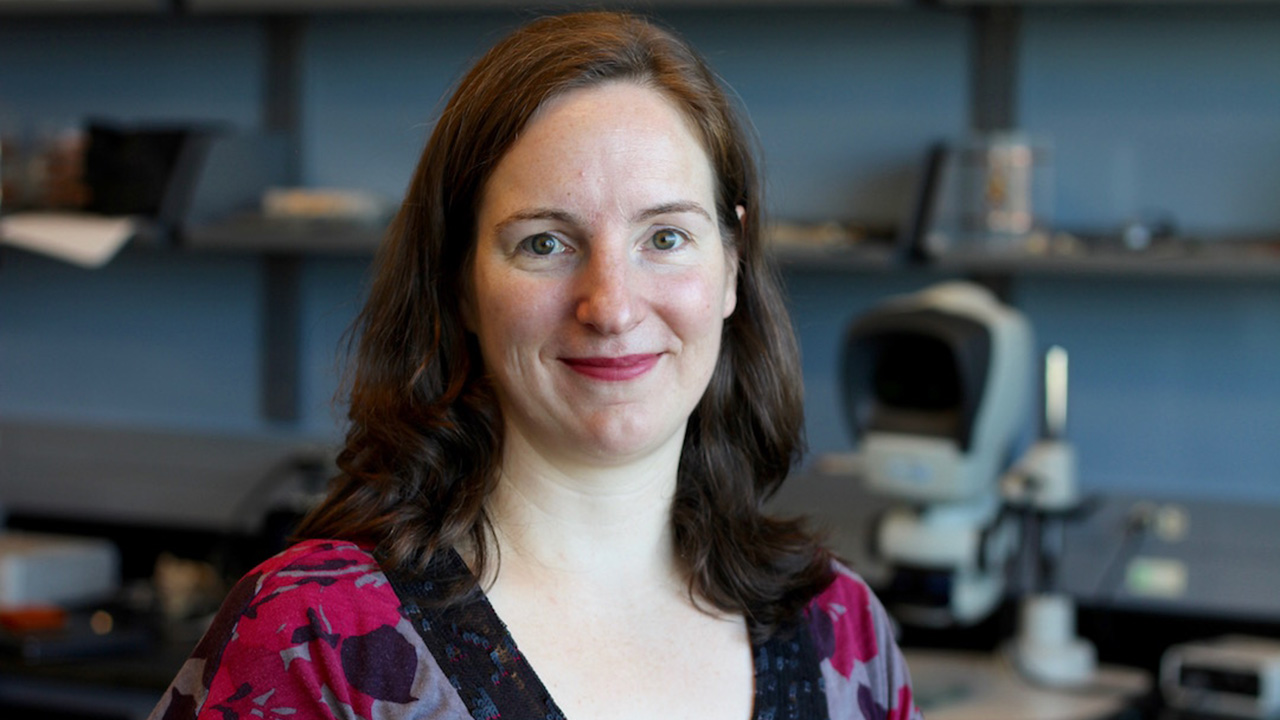Good vibrations
Growing up, it wasn’t unusual for Dr. Christine Démoré’s family to discuss the fundamentals of electricity and magnetism. “Around the dinner table we did talk about science. We learned about Maxwell’s equations,” recalls Démoré, a newly appointed scientist in Physical Sciences at Sunnybrook Research Institute (SRI).
The daughter of an astrophysicist and a chemist, Démoré says she knew she wanted to be a scientist early on. “I was always trying to build things and mix things, and for a long time I thought I might be interested in chemistry like my mother and her parents, but I realized it’s the physics of the chemistry that I really liked.”
Her father’s work took the family to Sydney, Australia and then to Ottawa, Canada. Démoré did her undergraduate degree in engineering physics and her PhD in physics, both at Queen’s University in Kingston, Canada. Her thesis was on designing ultrasound transducer arrays for medical imaging.
She says ultrasound stoked her curiosity from day one. “I find it fascinating, from the active piezoelectric materials of the ultrasound probes, to how they’re put together—the manufacturing methods, the engineering process—and how we can design them for different applications.”
After her PhD, Démoré worked as a researcher at the University of Dundee, in Scotland. When the opportunity arose to join SRI Démoré says she jumped at the chance because of the faculty’s strengths in ultrasound imaging and the state-of-the-art facilities. She plans to use extensively the device development lab within SRI’s Centre for Research in Image-Guided Therapeutics. Démoré says having access to advanced fabrication equipment while working at a hospital is unique and ideal for doing translational research. “It’s so easy for people in development to be detached from the application. [Here] it’s very easy to observe procedures and understand how the technologies we’re investigating can be adopted clinically.”
Her focus is on developing miniature ultrasound probes for clinical imaging. These are probes that can be attached to a catheter, endoscope or biopsy needle to yield greater insight for interventional procedures. For example, the needle probe would be able to visualize tissue to help guide procedures or target biopsies better, and to image the region around a tumour, which could help with diagnosis, prognosis and treatment planning. She is also looking at how ultrasound can improve guidance of anesthetic procedures such as epidurals, which are given to reduce pain, for example, during labour, and are administered by doctors strictly by feel and knowledge of anatomy.
She is collaborating with Dr. Meaghan O’Reilly, an SRI scientist in Physical Sciences and a fellow alumna of Queen’s University’s faculty of engineering, on designing ultrasound devices for image-guided intervention. She will also work with Dr. Stuart Foster, a senior scientist at SRI and her neighbour a few office doors down, on developing ultrasound probes and techniques for preclinical imaging.
Démoré is in the early stage of her career, but she has already accomplished much. In 2014, she was part of a team that was the world’s first to demonstrate an acoustic tractor beam that could move larger objects. This is a beam that draws an object to an energy source, in this case, an ultrasound transducer. It is part of her broader work in acoustic manipulation, or “tweezing” as it’s also known, which uses sound to move objects such as cells and particles. In 2015, she was awarded the prestigious Ultrasonics Early Career Investigator award by the IEEE (Institute of Electrical and Electronics Engineers).
She says that while she misses friends and colleagues from Scotland, it is nice to be back in Canada, and she hopes to introduce her daughter to canoeing, skiing and even a proper Canadian winter. She looks forward to using her expertise to tackle clinical problems. “There are many procedures that clinicians do effectively blind because there aren’t any tools to help them see. They do that well enough, but there are many cases where being able to visualize what they’re doing and see into tissue, which ultrasound can do, could make a clinician’s job much easier and make the patient experience much better—less pain, potentially faster recovery and less invasive,” she says. “Those are many of the things that drive me—how do I make this? How does this technology work, how do I get the most out of it, and how can it have a positive clinical impact?”



